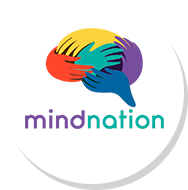In the Asia-Pacific region alone there are 370 million persons with disabilities (PWD), with 238 million of them of working age, according to data from the United Nations Department of Economic and Social Affairs. Hiring people with disabilities increases diversity in the workplace, which has been proven to boost creative thinking, problem-solving, and team morale.
Unfortunately, people with disabilities commonly experience at work. According to a report by the International Labour Organization, PWDs are often confronted with prejudices regarding their productivity. They also face discrimination at the hiring stage. A survey carried out in France shows that less than 2% of those having mentioned their disability in their CV were called for an interview.
For Ed Geronia, a journalist, person with mobility impairment, and co-founder and Chief Information Officer of Sari Software Solutions making workplaces welcoming and supportive of the needs of persons with disabilities is a win-win for everyone in the organization. “Everyone benefits from an inclusive workplace, not just those with a disability,” he says. This is because when employees feel a sense of belonging and feel more connected at work, they tend to work harder and smarter, producing higher quality work.
“PWDs should know that they can earn as much as an able-bodied team member if they are doing the same kind of work.”
Ed Geronia, journalist
Ed recommends some ways companies can make sure that their workplace is disability-inclusive:
- Review and refine job roles and processes. Part of this means ensuring that you hire someone based on the job qualifications, not on the basis of their disability. “There’s this notion that people with autism are good at math, so you made it a company policy that you will only hire those in the spectrum for accounting work,” Ed points out. But doing this is a disservice for both the PWD applicant and the other members of the team because you are basing your decision on a stereotype. “People should be hired solely for their capabilities, skills, and talent.”
Furthermore, don’t deny a person a training or promotion just because they are disabled. “Don’t tell someone who is mobility-impaired that you cannot make them manager because you assume they cannot travel to different work sites,” Ed says. “Instead, tell them what the position entails and let them determine if they can do it or not.”
Finally, make sure that your benefits and incentives for employees are the same for all. “PWDs should know that they can earn as much as an able-bodied team member if they are doing the same kind of work,” Ed says.
- Partner with community organizations that train persons with disabilities to be ready for employment. In the Philippines, these include:
- Project Inclusion Network, a non-profit organization that matches PWDs to employers.
- IDEA Philippines, which offers vocational training for deaf young people
- Microsoft Enabler Program, provides cloud & AI training for PwDs, accessibility education for employer partners, and inclusive hiring from non-profit organizations supporting PwDs.
- Have disability awareness and disability sensitivity training. Start by training someone in your human resources department to be a disability advocate. “This way, you have someone in the company who is looking out for the needs of your employees who have disabilities, both visible and invisible,” Ed says. Then move on to the rest of your management team; many might be harboring unconscious biases against people with disabilities and consider these team members inferior. “You have to treat these trainings as investments, because when you know the needs of your employees who are disabled, you can take steps to make things better for them,” he adds.
- Adopt best practices from other companies. “In the Philippines, we have to realize that there are still gaps in PWD employment policies,” Ed points out. “Let’s look for companies who are embracing inclusivity and find out what we can copy from them.”

For example, Philippine-based Lamoiyan Corporation, makers of Hapee Toothpaste, prioritizes hiring deaf employees for factory work. “If it’s just manual, if it’s just using the hands or the eyes, they’re as good as you and me—in fact, they’re more focused because of their handicap,” founder Cecilio Pedro said in a 2016 interview. The company is also supporting three schools for the deaf in the country, where they provide free education for the deaf through sign language.
A disability-inclusive workplace is more than just hiring people with disabilities. It offers employees with disabilities — whether visible or invisible — an equal opportunity to succeed, to learn, to be compensated fairly, and to advance. “Many organizations are already starting to adopt policies on gender equality,” Ed points out. “Why not take it a step further and also include equality for PWDs?”
MindNation offers virtual trainings on diversity and inclusion so that your organization becomes a safe space for everyone, regardless of their age, gender, race, and physical and mental disabilities. Partner with us to build happier, healthier, and more productive teams. Visit http://www.mindnation.com to know more.

